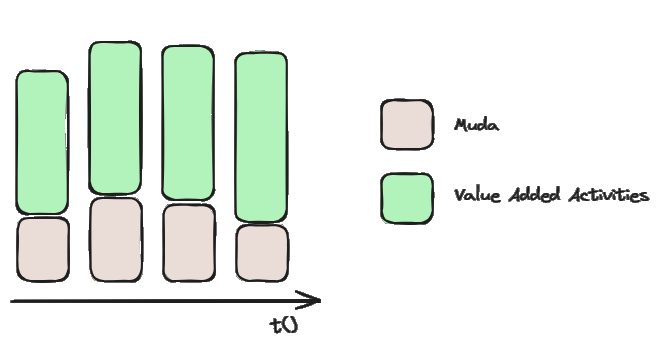by James Shore
https://www.jamesshore.com/v2/blog/2024/a-useful-productivity-measure
“I have introduced the idea of “Product Bets.” Each major initiative needs a Product Bet Proposal. It’s a short, one-page document that explains:
- What we’re going to accomplish
- The value it’s estimated to generate
- The amount we’re willing to bet
- The justification for the value
- How we’ll measure the value
In order for a proposal to be accepted, a member of the Leadership team needs to sponsor it, take accountability for its success, and convince the other Leadership members that their proposal is more important than all the others.”
Value-Added Activities x Muda
“Like any engineering organization, we spend some percent of our time on fixing bugs, performing maintenance, and other things that are necessary but don’t add value from a customer or user perspective. The Japanese term for this is muda.“
…
“I presented our metric as a single stacked bar chart. (Like a pie chart, but in a rectangle.) Muda on the bottom, value-add on the top.”
The chart below is my interpretation of what a regular team that balances muda with value-added activities looks like. Muda activities represent the majority of the team’s accumulated time with small variations over time. Isolated projects and version releases make value addition vary across the time series.

Teams struggling with a poor quality codebase, too much legacy code to be maintained, burnout and with the lack of an evolutionary product vision may look like this. Muda takes most the available productive time and squeezes value-added work to a minimum.

Teams should anticipate implementing a scenario similar to the one below, focusing on reducing muda and prioritizing value-adding activities that enhance the product’s value for users.

